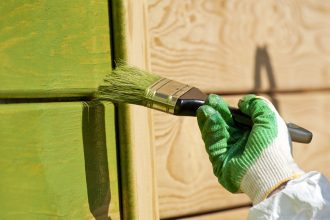Unless you’re an experienced builder or the savvy DIY type, you probably don’t think too much about the drains that run throughout your home. Of course, we count on our drains every day without worry. Let’s be honest; the only time we think about our drainage is when they stop working.
When a drain gets clogged or stops working correctly, it’s going to be a bad headache getting it repaired, especially if you don’t know what you’re doing. Worse, a clogged drain can begin to stink and overflow if you just leave it. With that said, having problems with your drains is the perfect situation to call in a professional plumber.
So what does a plumber do? How do they repair drains? Although we won’t provide a detailed description of what they specifically do, here’s a look at how they get things fixed:
Busted Pipes
In huge cities such as New York, London, Brisbane, etc., there are old building standards that most houses follow. For example, in Toronto, many houses built before 1985 often have vitrified clay underground pipes that can easily crack or leak. Although clay pipes aren’t used anymore, many houses still have these pipes.
If you’re in significant areas such as Scarborough, Toronto, or anywhere nearby and need help with plumbing problems, don’t fret. The best plumbing services and Drain repair Scarborough has to offer is just one inquiry away.
For older homes, a professional plumber has the schematics and know-how to fix the plumbing. These professionals often use certain materials to replace busted pipes in your homes. Here are some examples of these materials:
Galvanized Pipes – Made out of steel, these pipes are commonly used to take water away from your house. Because these pipes are thicker and heavier, they’re ideal for that purpose. Galvanized pipes are also coated with zinc, which helps prevent rusting.
PVC Pipes – PVC pipes are the most common pipes used everywhere. Since they’re inexpensive and easy to get, many builders opt for Polyvinyl Chloride Pipes or PVC pipes.
ABS Pipes – ABS or Acrylonitrile Butadiene Styrene pipes are generally used for drain, vent, and waste pipes. They’re also ideal for sewer pipes and electrical wire insulation due to their durability. ABS pipes work well when underground and in cold temperatures.
Drain Backup
Drain Backups happen when a drain pipe that connects a house to the city drain gets blocked. You don’t want drain backups to happen as dirty and smelly wastewater can make it back to your house. Common causes of drain backups include invasive tree roots, heavy rains, damage, fats, oils, and grease. Plumbers often use augers and water jet cleaning to clear these blockages.
Drain Cleaning
One reason your pipes aren’t working properly is not doing maintenance work. Arguably, no one wants to get down and dirty cleaning their own pipes. Although it’s an important part of maintaining your house, it’s certainly not a job a homeowner necessarily wants to do on their own.
To prevent build-ups, you can certainly call a professional plumber to do the work for you. Drain cleaning often involves the same tools in clearing a backup. Plumbers will also check the conditions of your pipes as they clean them thoroughly.
Smelly Drain
If you’re wondering why your drain smells after not being used for a long time, it could be a dry p-trap causing it. P-traps have water that prevents sewer gas from coming up your pipes and into your homes.
Luckily, you won’t need a professional plumber if you have a dry p-trap. All you need to do is run some water back to replenish the water in the pipe. If it’s not a dry p-trap causing the smell, a professional plumber might use a sewer line camera to see what’s causing it.
Conclusion
Don’t let leaking pipes and slow drains ruin your day. If you’re unsure or don’t know how to fix these things, it’s better to seek the help of a professional plumber.














